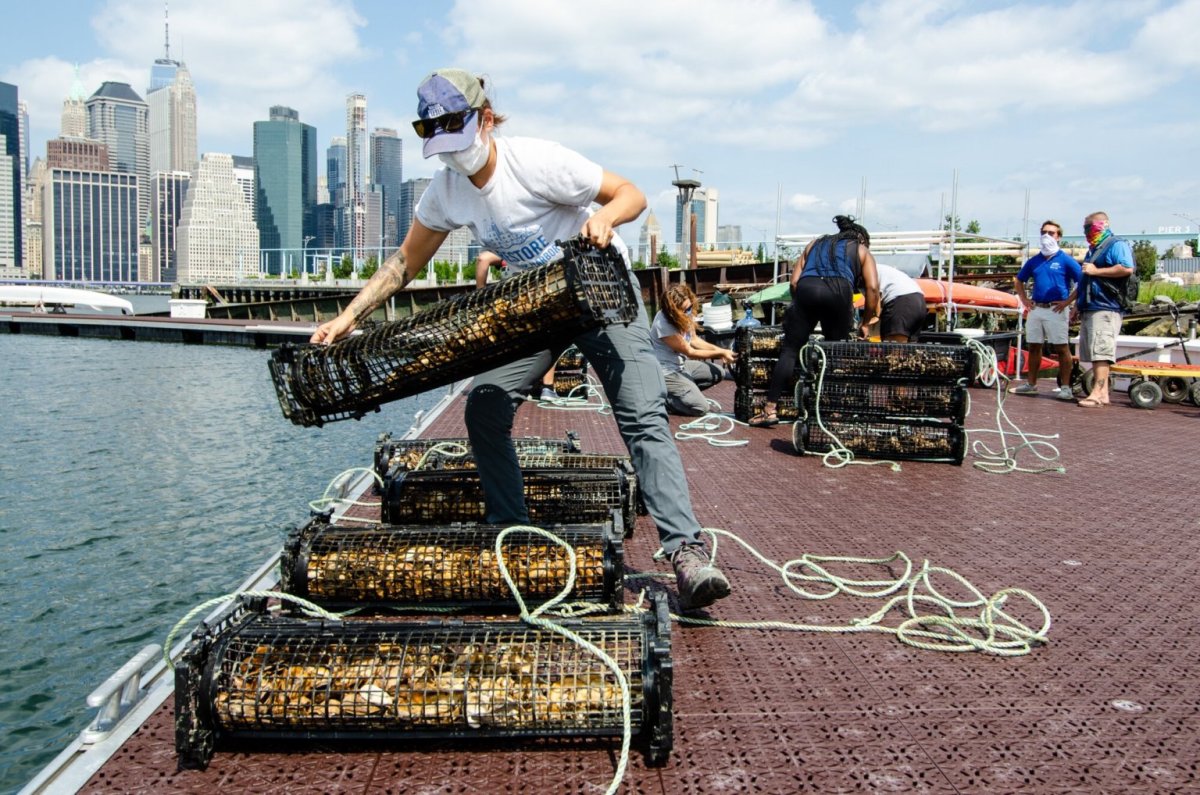Scientists with the Billion Oyster Project submerged 30 new shellfish cages in the waterway at Brooklyn Bridge Park on Friday, continuing a years-long project to bring oysters to Brooklyn’s shorelines.
New York City restaurants donated oyster larvae and shells, which the group stuffed into the cages and dunked into the East River off the One 15 marina. The shells, the group said, will develop into a healthy community of adult oysters along the Kings County coast.
Scientists with the organization also plan on adding to the oyster nursery over time, once they receive the proper permits from the New York State Department of Environmental Conservation, according to a rep with the organization.
“This is a work in progress,” said Tatiana Castro, a Billion Oyster Project field coordinator.
While in the water, the oyster larvae will grow, filter river water, house other marine life, and serve as an educational tool for school groups to teach students about the city’s waterways.
The larvae will use the remaining warmer months to feed while their food is more abundant, in hopes of becoming large enough to weather out the winter.
“The bigger they get before winter the better chances they have of surviving,” Castro said.
Oysters, which were once bountiful in New York’s waters before being wiped out by overharvesting and pollution, are invaluable for their filtering abilities — as just one adult oyster can filter up to 50 gallons of water a day. Together, the sea creatures bunch into tight packs and form reefs, which helps stop beach erosion, protects against storm surges, and provides shelter for small marine animals.
“As they are creating that reef structure, they provide a home for other smaller organisms,” said Castro. “They are able to protect them from any predators.”
The Billion Oyster Project, which is headquartered on Governors Island, has planted over 45 Million live oysters in New York waterways since its inception six years ago, including off Sunset Park’s Bush Terminal Park, Coney Island Creek, and elsewhere off Brooklyn Bridge Park.
The environmentalists say they don’t yet know how well the new oysters will do in the marina yet, but early signs from the small cages of oysters in the area maintained by school groups sent out in previous years known as oyster research stations show promising early signs.
“Last year we were able to come out and monitor some of them and they were still alive, they were doing well,” Castro said. “When we were pulling out those ORS’s we saw a lot of other marine organisms, we saw crabs, a lot of plant species. It just goes to show that oysters and the structures that we put them in don’t just help the oysters but help other organisms as well.”
This story first appeared on our sister publication brooklynpaper.com.





































